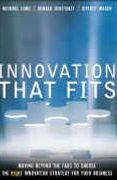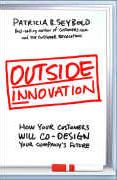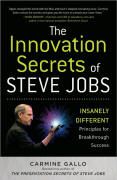
A 5 Minute Overview Of
The Human Element
Overcoming the Resistance That Awaits New Ideas
About the Authors
Loran Nordgren is professor of management & organizations at the Kellogg School of Management at Northwestern University. He specializes in the psychological processes that guide how people think and act. His research has been published in leading journals like Science as well as Fast Company and the Harvard Business Review. He is a graduate of the University of Amsterdam and St. Olaf College.
David Schonthal is professor of strategy, innovation, and entrepreneurship at Kellogg. He worked for more than a decade at design firm IDEO, and currently serves as an operating partner to venture capital firm 7Wire Ventures. He is a contributing editor to Forbes, INC., Fortune, and Harvard Business Review magazines, and several other publications. He is a graduate of Northwestern University and Boston University.
The Main Idea
Innovators wanting to introduce a new idea or innovation typically assume the best way to get people to embrace the new idea is to heighten its appeal. They work on adding enough fuel behind the idea that people will eventually say "yes" and get on board. They have a "fuel-based mindset", and want to keep adding benefits and features.

A better approach might be to analyze all the psychological factors which generate friction for the adoption of that innovation. If you have a "friction- based mindset" instead, and work to reduce those frictions rather than trying to continually add more fuel, you might have more success.
In particular, there are four key frictions which always operate against innovation and change:

To get more of your new ideas into action, don't try and add more fuel. Figure out ways to lower or eliminate the frictions.
Our intuition tells us that for an idea to take flight, we need to give it thrust. And that's true. But imagine building an airplane without taking aerodynamics into account and only thinking about the power of the engines. This is precisely what we do when we launch a new idea or initiative. No wonder so few take flight.
Sections in this Books
1. The Fuel-Based Mindset. Most innovators try and make their new ideas more attractive and compelling by progressively adding fuel — more and more features and positive elements to try and sweeten the deal. Fuel is good because it's obvious, but more fuel does nothing to address the friction which may be hiding beneath the surface. To understand friction, you have to switch your focus from the idea to the audience, and dig deep into why people do what they do.
2. Friction #1 — Inertia. Inertia is the powerful desire to stick with the status quo. When attempting to innovate and thereby change behavior, give people multiple options. You have to position the innovation as a slight tweak to business as normal, rather than a radical change in direction.
3. Friction #2 — Effort. Effort is the energy required (real or perceived) to make change happen. To overcome this type of friction, demonstrate how easy it is to implement the new approach. Show the cost of implementation is low but the rewards are great.
4. Friction #3 — Emotion. Making change often generates unintended negative emotions. Show your innovation will not threaten people and you're well on your way to offsetting this source of friction. Reduce anxiety, and this type of friction gets dissipated.
5. Friction #4 — Reactance. Reactance is the human impulse to resist being changed. A great way to lower reactance is to make sure people don't feel pressured to change. Instead, build genuine interest in your innovation, and fuel the desire for people to see how it performs.
Key Takeaways
- To get more of your new ideas into action, don't try and add more fuel. Figure out ways to lower or eliminate the frictions.
- To understand friction, you have to switch your focus from the idea to the audience, and dig deep into why people do what they do.
Our intuition tells us that for an idea to take flight, we need to give it thrust. And that's true. But imagine building an airplane without taking aerodynamics into account and only thinking about the power of the engines. This is precisely what we do when we launch a new idea or initiative. No wonder so few take flight.
Summaries.Com Editor's Comments
Really enjoyed reading The Human Element, written by Kellogg professors Loran Nordgren and David Schonthal. I think they really hit the nail on the head when they explained that innovators try and put more and more fuel behind new products, when in reality it might be friction that is holding them back. In that case, more fuel only adds to that friction. To address that friction, you have to get into the audience and understand what's happening in their lives in more detail.
The perfect example of that phenomena was the furniture company offering customized couches. They couldn't understand why people would spend hours designing their own couch, only to abandon the shopping cart and not order. At first they thought they needed to add more zing, better features, but when they spoke with customers, they learned that friction was the problem. Customers didn't want to order a new couch until they could figure out what to do with their old couches. When the company added an option for customers to have their old couches picked up and donated to families in need, their sales soared.
Great lesson. Rather than always looking to add more fuel, identify the human frictions and remove them. It often is a better way to go. Very smart.
Want in-depth 30-minute summaries?
In addition to this 5-minute overview, Summaries.Com has a premium 30-minute summary of this book and 1,000+ more, to help you advance your career and business.
Check Out Summaries.com Premium Plans Today!Want more 5-minute Snapshots?
To get a new 5-minute business book snapshot each week, sign up for the Summaries.com free plan.
Sign Up for the Summaries.com Free PlanSuccessful Products 101 Collection
If you enjoyed this summary, here is a collection of related business book summaries, to help you get ideas and strategies that will give you an edge over your competition.
This mini-course will give you ideas on bringing successful innovations to the marketplace.
Buy Successful Products 101 Collection (5 x 30-Min Summaries)
The Human Element
Overcoming the Resistance That Awaits New Ideas
by Loran Nordgren and David Schonthal

What Were They Thinking?
Marketing Lessons I've Learned From Over 80,000 New-Product Innovations and Idiocies
by Robert McMath and Thom Forbes

Innovation That Fits
Moving Beyond the Fads to Choose the Right Innovation Strategy For Your Business
by Michael Lord and Donald Debethizy

Outside Innovation
How Your Customers Will Co-Design Your Company's Future
by Patricia B Seybold

The Innovation Secrets of Steve Jobs
Insanely Different Principles for Breakthrough Success
by Carmine Gallo